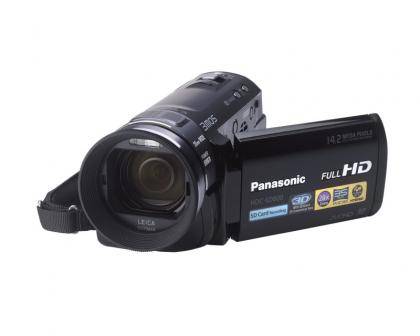Panasonic's single-sensor Panasonic HDC-SD90 impressed us with its detailed outdoor footage. The HDC-SD800 doesn't have the SD90's accessory shoe or microphone input - you'll need to buy the high-end HDC-SD900 for those - but its array three dedicated CMOS sensors (one each for red, green and blue light) promise superior image quality.
The SD800 is significantly larger than the tiny HDC-SD90 - while the SD90 had a can of Red Bull's proportions, the SD800 is fat as a Fanta. There are few controls; just a zoom rocker, buttons for recording video and taking photos, enabling or disabling image stabilisation and switching from 1080i to 1080p video.

As on the SD90, if you switch to manual mode you can use the touchscreen to tweak the image's white balance, the camera's shutter speed and the lens aperture. You can also focus manually with the touchscreen and, as on the SD90 again, the camcorder helps you by highlighting in-focus parts of the image in blue.
When it comes to image quality, it's not immediately apparent where the £150 premium over the SD90 goes. Footage taken in daylight only appears slightly more detailed at first. However, once you start to look closer, especially at maximum zoom, the differences become apparent. The level of detail is astounding; when filming buildings in the street, we were amazed by the sharp vertical lines on walls, the bumps and irregularities on paintwork and sharp, black text on road signs. There was almost no noise at all in bright light, lending everything a realistic vibrancy.
Things got even better when we moved inside. Footage shot under indoor lighting had very little noise and none of the oil-painting-esque lack of detail associated with excessive noise reduction. In low light, where the SD90 couldn't maintain a smooth frame rate, the SD800 gave us jerk-free video. Only when we turned all the lights off did excessive noise creep into the picture.
